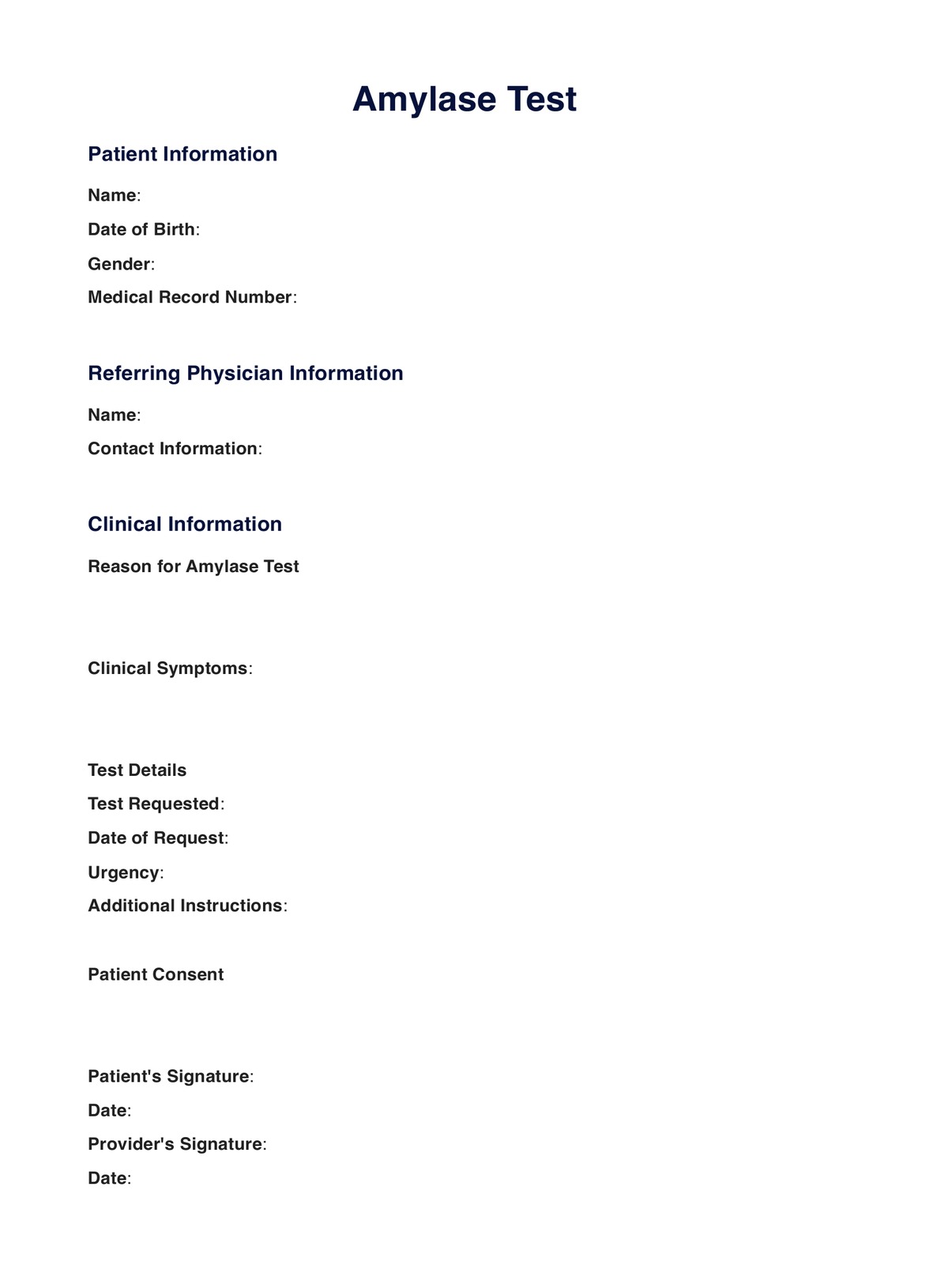Healthcare providers, including doctors, gastroenterologists, surgeons, and emergency room physicians, typically request an Amylase Test.

Amylase Test
Get insights into your health with an Amylase Test. Understand pancreatic and salivary gland function with this diagnostic tool.
Use Template
Amylase Test Template
Commonly asked questions
Amylase Tests are used when there are symptoms or clinical indications of pancreatic or salivary gland disorders, such as abdominal pain, pancreatitis, or suspected pancreatic cancer.
Amylase Tests involve drawing a blood sample from the patient, which is then analyzed in a laboratory to measure amylase levels. The results help diagnose and monitor conditions related to the pancreas and salivary glands.
EHR and practice management software
Get started for free
*No credit card required
Free
$0/usd
Unlimited clients
Telehealth
1GB of storage
Client portal text
Automated billing and online payments











